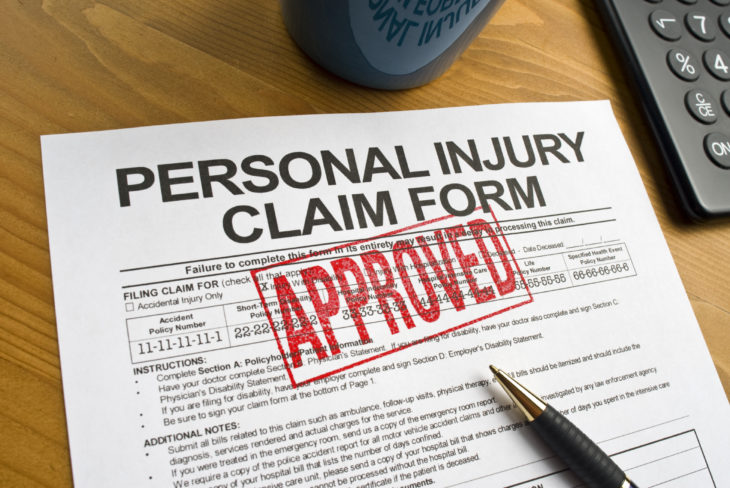Our legal system has to deal with lots of personal injury cases. In fact, it seems like everyone knows someone who has had to make a claim but only a small percentage of the population really understands how the laws work. Most rely on their lawyers like Schultz & Myers personal injury lawyers to do the dirty work for them without fully understanding what their case involves. Many demand quick resolution and huge compensations without knowing the entire process of researching, filing, negotiating, and settling or winning a case in court. In this post, we’ll break down the basics of personal injury law to ensure that you are on the same page if you need to consult a lawyer.
Contents
What Is Personal Injury? The Different Types?

Source: gotnewswire
First, let’s define what personal injury is. Personal injury law is also referred to in legal circles as tort law. This law permits the victim or injured person to file a case in civil court and receive legal remedy for the damages they incurred as a result of the accident. In short, the law permits an injured individual to receive financial compensation for the negligence or intentional conduct of another that led to their injuries.
These are the different types that fall under personal injury, including:
Accidents
Accidents that occur due to a person’s negligent acts are among those allowed in such cases. Some of the examples are medical malpractice, car accidents, and slip and fall accidents. For such cases to reach a successful resolution, the prosecuting party must present proof of the defendant’s negligence and show how it led directly to their injuries.
Intentional Acts
In contrast with accidents, intentional acts refer to instances when the offending party intended to injure the victim. The action is deliberate, such as in assault and battery cases.

Source: Marc Futterweit
Defective Products
Individuals who suffer harm due to a defective product may also file a claim against the manufacturer, distributor, or retailer. An attorney with a good track record of looking for potential loopholes and product liability will help you identify the at-fault party.
Defamation
Another situation that may fall under the personal injury law is defamation, where a person’s public remarks cause “harm” to another individual’s reputation as well as emotional damage to the victim. Not a lot know that you can file a lawsuit for this as well.
What Are the Bases of Personal Injuries?

Source: Mechanic Web
Most judgments surrounding personal injuries are made based on precedent. As such, it is common to have a judge’s ruling for a particular case become the basis for a similar one in the future. The courts apply a decision based on what the preceding judge ruled because it is the precedent for that type of claim. For this reason, it is also pretty standard to have case outcomes that differ from state to state.
However, do note that precedent is not the sole basis of the outcomes. One example of this is the worker’s compensation laws. Worker’s compensation laws are universally applied and become the basis for all work-related accidents. It is also for this reason that worker’s compensation exclusively remedies workplace injuries.
Process of Personal Injury Cases

Source: LG Williams & Prichard
We should all have a better understanding of what goes on during a personal injury law case. While each claim is somewhat unique with distinct circumstances, the process follows a similar path. It is important to be familiar with the process so you would know what to do.
Infliction of Harm
A case can only exist if there was harm (damages) inflicted on the victim by another. Once the victim is harmed, he or she can bring a personal injury claim against the defendant.
Consultation with Lawyers
The lawyers determine if the client has a case and the answer may depend on the state where the injury occurred. All circumstances surrounding the case will be taken into consideration and factored in. For example, a personal injury lawyer would first determine whether the driver involved in a vehicular accident operated within reasonable safety standards on the road. For cases when the driver went over the speed limit and/or operated their vehicle under the influence of drugs or alcohol, then the case may not have merit. The same can be said for doctors who provide care for their patients. It must be done with a level of competence expected within their profession under similar circumstances. Product manufacturers have a duty to produce high-quality items that would not do harm to their consumers.

Source: Pines Spine & Joint
Settlement Ensues
As soon as the lawyer proves that there is a strong case and the defendant breached their legal duty, the latter may choose to settle outside of court. Out of court settlements involve defendants accepting an offer from insurance companies. In exchange, the victim would promise not to pursue filing a lawsuit over the injury that resulted from the negligence.
Often, settlement cases take a while because there is back and forth in the proceedings and agreements between parties. Should the plaintiff settle, the case is then considered closed. However, if the plaintiff is not happy with the negotiation process and the settlement amount, they can choose to file the lawsuit. In some cases, the settlement discussions ensue even if the lawsuit has been filed. When this happens, the settlement must be reached before the jury decides if the defendant has a liability.
Personal injury law is a complicated process. It takes several months, depending on the severity of the case and the intricacies of each circumstance. Lawyers also have to factor in all possible angles to ensure that their clients have an iron-clad case against the defendant. This way, they can ensure that their client can receive the monetary compensation that they deserve. Getting the basics of personal injury laid out is necessary to improve the lawyer-client relationship as this ensures that they are on the same page in the process. For clients, it doesn’t hurt to communicate with their lawyer and voice out their concerns to ensure the success of the settlement or trial.
